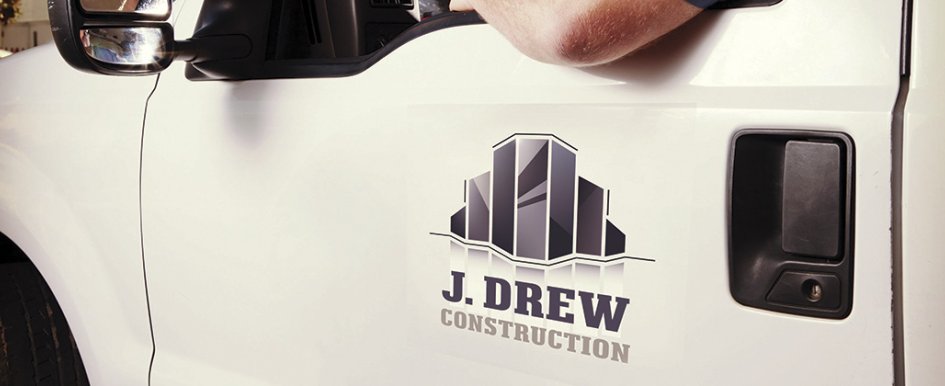
As a matter of course in running your construction company, there will come a time when you will be faced with upgrading your fleet and deciding what to do with older vehicles. One option is to resell them, but in doing so, you raise issues regarding de-identifying vehicles to protect your brand and reconditioning them to maximize resale value. You have worked hard to establish a reputation and don't want to see it diminished in any way, which is why de-identification of vehicles is critical. Your brand can quickly become tarnished if a vehicle that is no longer owned by your company is out on the road and not maintained at high standards, or worse, being operated in a questionable manner. The liability of not de-identifying your fleet vehicles prior to sale can cause a significant issue if not properly handled.
Improper De-Identification Decreases Value
When it comes to de-identifying a vehicle, it pays to have a professional complete the job to eliminate the chance of paint damage. If the vehicle is fully wrapped, it could take a significant amount of time for de-identification, which, if being done by one of your employees, would take time away from their normal responsibilities. In improperly de-identifying this vehicle, the owner can see the resale value plummet hundreds or perhaps even thousands of dollars. Additionally, the vehicle will need a new paint job before it can be resold. New damage caused by improper or sloppy de-identification can cost significantly when reselling the vehicle.
Reconditioning Light-Duty Vehicles
A question many construction business owners ask is, "When and how much should we recondition a vehicle that is being taken out of service to ensure that the money is well spent and will increase our rate of return?" The answer to this question varies widely. There are a number of factors that need to be taken into account, such as: age of the vehicle, where the vehicle is located and any related mechanical issues. First, Class 4-8 trucks should be viewed differently. Consider a side-by-side comparison of two late-model pickup trucks, both with similar mileage and normal wear and tear on the interior and exterior. However, the second truck needs a new starter and battery. The first task is to establish the current value of these vehicles. In this instance, both trucks are in fair condition and valued at $5,000 each. For the second truck, the battery and starter are going to cost about $500.
It definitely makes sense to fix these mechanical issues, as a running unit will always be worth more than a non-running one (which would probably bring only $3,500 at auction). In this example, spending $500 to get the second truck up and running will give you a lift in market value of roughly $1,500. Buyers of work trucks are expecting normal wear and tear, as these are transportation units and not a salesman's passenger car, so taking the truck to a body shop to fix minor dents and scratches is not worth the time, money and effort. When it comes to decisions on reconditioning, the most important factor is whether or not the vehicle will run. Dealers who are standing in auction lanes or looking online for inventory will always pay more for a running unit.
Reconditioning Larger Trucks
Medium to heavy-duty units usually have a different buyer base compared to those seeking light-duty vehicles. Typically, with heavy-duty units, buyers are looking to see if there are trade terms—meaning there is a minimum 50-percent wear in tire tread and brakes, glass is in good shape and there is less than $500 in cosmetic damage.
Spending the money to fix a windshield is well worth the investment, as buyers are looking at these trucks and asking, "Can I use them as functional assets right now?" Seat bottoms on the driver's seat are typically well worn or torn, so spending money there will also freshen up the truck and is a pretty minimal expense.
Similar to a light-duty unit, don't go over the top in reconditioning expenditures if the truck is 20 years old and fairly worn. Generally, you won't see a big enough return on investment.
Reconditioning an older vehicle will be difficult to get a return on unless it's money spent to get the vehicle up and running. A good recommendation is that for every $1 you spend, you should expect to see $2 in return.
No matter the vehicle class, spending money on detailing inside and out is always worth the expense. Given the volume of online sales in today's used-vehicle market, a clean truck—even if it shows some dings, nicks or blemishes—will always catch a buyer's attention, make your vehicle stand out from the others and sell more quickly.
